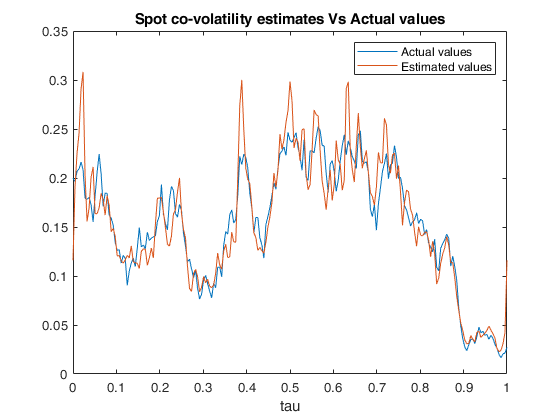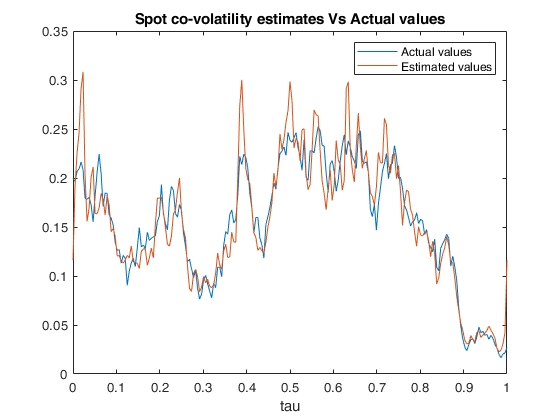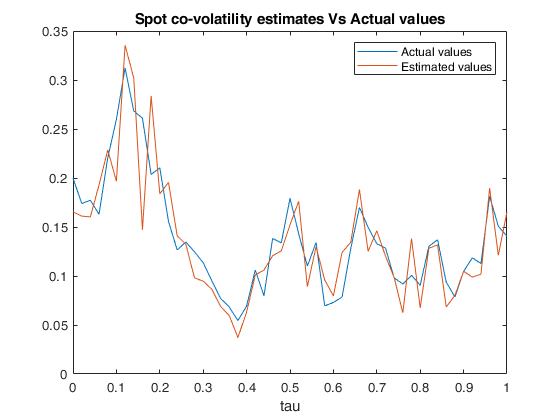We assume that vectors x1 and x2 contain discrete observations from a bivariate diffusion
process following the Ito stochastic differential equation
dx^i(t)= \sigma^i(t) \ dW^i(t) + b^i(t) \ dt, \quad i=1,2,
where W^1 and W^2 are two Brownian motions defined on the filtered probability space
(\Omega, (\mathcal{F}_t)_{t \in [0,T]}, P), with correlation \rho, while
\sigma^1, \sigma^2, b^1 and b^2 are random processes, adapted to \mathcal{F}_t.
See the References for further mathematical details.
The spot covariance c between the processes x^1 and x^2 at time t
\in [0,T] is defined as
c(t):= \frac{d \langle x^1, x^2 \rangle_t}{dt} = \rho \sigma^1(t) \sigma^2(t).
Let i=1,2. For any positive integer n_i, let \mathcal{S}^i_{n_i}:=\{ 0=t^i_{0}\leq \cdots
\leq t^i_{n_i}=T \} be the observation times for the i-th asset. Moreover, let \delta_l(x^i):=
x^i(t^i_{l+1})-x^i(t^i_l) be the increments of x^i.
The Fourier estimator of the spot covariance at time t \in [0,T] is
given by
\widehat c_{n_1,n_2,N,M}(\tau)= \sum_{|k|\leq M} \left(1-{|k|\over
M}\right)c_k(c_{n_1,n_2,N}) \, e^{{\rm i}\frac{2\pi}{T}k\tau},
where:
c_k(c_{n_1,n_2,N})={T\over {2N+1}} \sum_{|s|\leq N} c_{s}(dx^1_{n_1})c_{k-s}(dx^2_{n_2}),
c_k(dx^i_{n_i})= {1\over {T}} \sum_{l=0}^{n_i-1} e^{-{\rm i}\frac{2\pi}{T}kt^i_l}\delta_{l}(x_i).


 Example of call of FM_spot_cov with default values of N, M and tau.
Example of call of FM_spot_cov with default values of N, M and tau.

